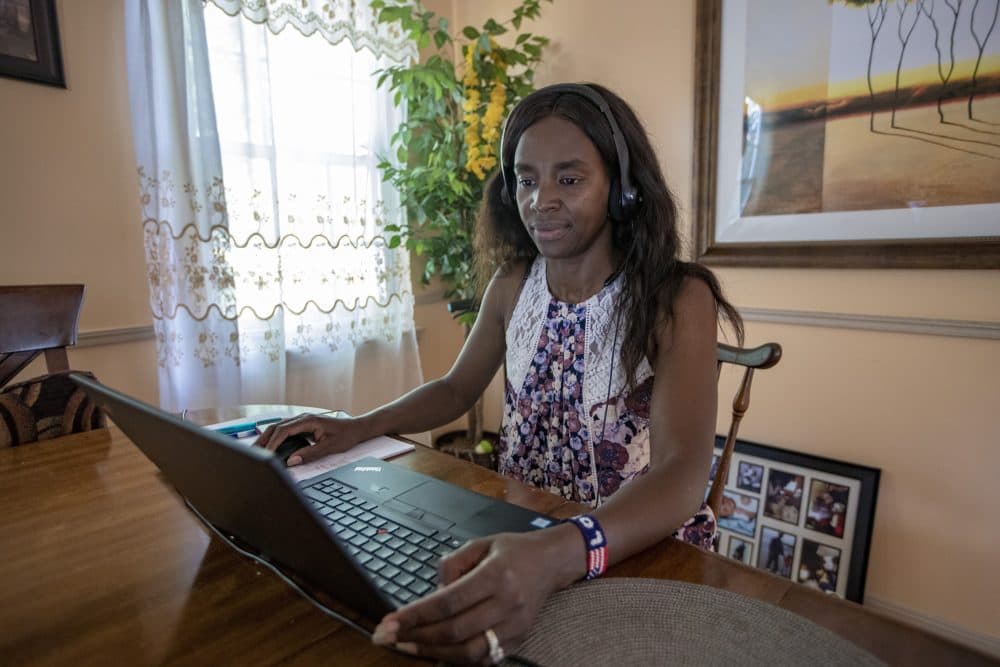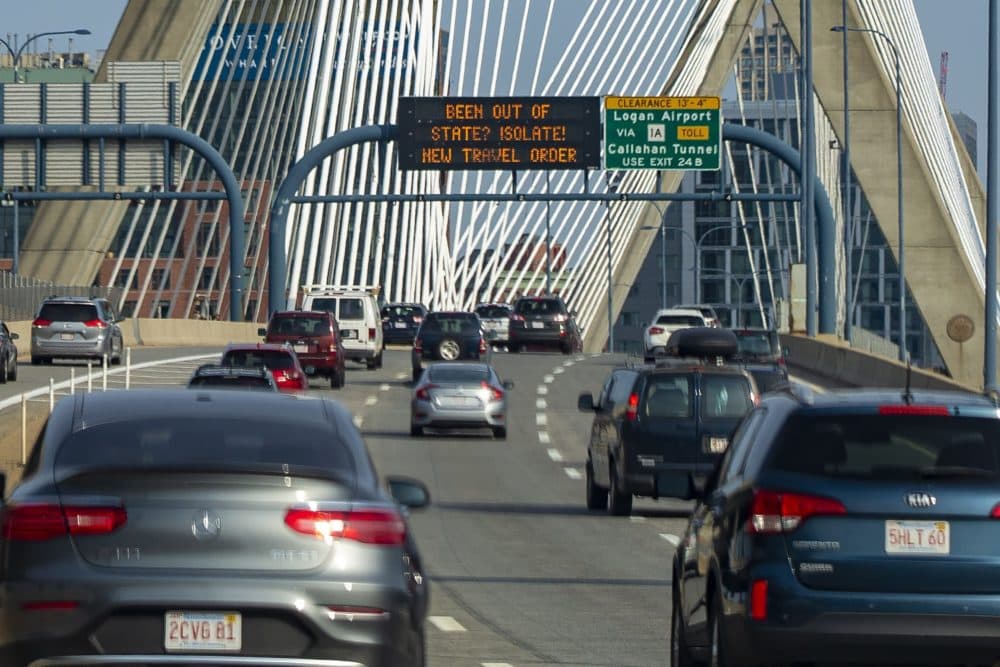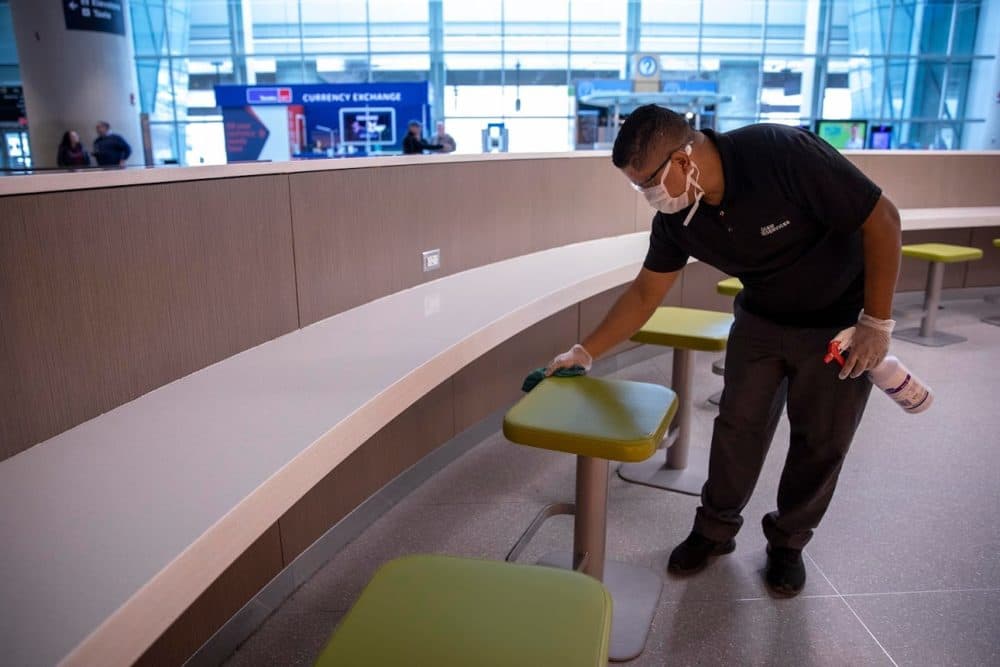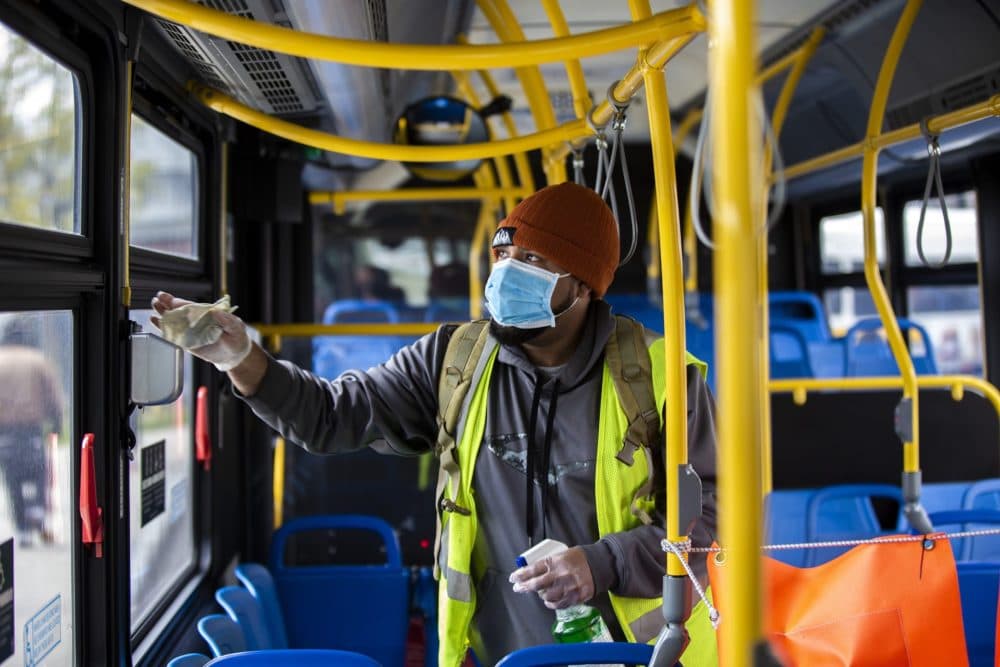Advertisement
Coronavirus Coverage
The COVID-19 Risks You May Take, And Create, While Traveling
ResumeTravel is a growing challenge in efforts to contain the coronavirus. Take the case of a man with COVID-19 symptoms who boards a flight to Massachusetts after a work trip to North Carolina. He doesn’t want to ride out a serious illness in a hotel room. A woman from the Boston area develops a sore throat, her first sign of COVID-19, as she and five companions drive north from Florida, dropping off three passengers in New Jersey.
And then there’s the family of four who lands at Logan Airport after visiting relatives in Texas. They’ve taken three flights and stayed overnight in a hotel because they missed a connection. Two days later, three members of the family test positive for the coronavirus. It’s hard to fathom all the surfaces they touched and the individuals they may have exposed to the virus.
“It’s a lot,” says Lorna Kiplagat, a contact tracer assigned all three cases, “a lot of people.”

Kiplagat says the travelers in each case isolated as soon as they got home. Her challenge, and that of Massachusetts' Community Tracing Collaborative, is to try and trace the trail of infection. The woman in the car from Florida couldn’t remember details about the rest areas or restaurants she’d stopped at along the way. With the airline passengers, Kiplagat can collect travel records: all the flight details, seat assignments and notes about movement on the plane.
“Then you send that off,” says Kiplagat, who is on loan to the contact tracing program from the Lowell Community Health Center. “You can’t follow after that, you don’t know.”

Kiplagat can't be sure what happens after the information gets passed on to other agencies and states. There’s little chance fellow air passengers will be warned about a potential exposure in a timely manner. Here are the steps to making a notification:
- Kiplagat sends an urgent message to her supervisor
- The supervisor alerts the Massachusetts Department of Public Health (DPH)
- DPH sends the flight and seat info to the Centers for Disease Control in Atlanta
- The CDC says it asks the airline or airlines for a passenger list to determine who sat within six feet of the people infected.
- When the CDC receives names and contact details, the federal agency notifies relevant local health departments
- The state, country or municipal health officials contact passengers who may have been exposed.
Each step is a delay that makes tracing a case and getting to someone who may be spreading the virus more difficult, says Adriane Casalotti, chief of government and public affairs with the National Association of City and County Health Officials.
Casalotti says her members, the key contact tracers in most states, are already frustrated by testing shortages and delayed test results as they try to contain the virus.
“When you look at these multi-state, multi-methods of transportation challenges, it really is daunting,” she says.
Travelers can help by wearing masks, staying at least six feet from anyone besides their regular close contacts and washing their hands often. Here’s another tip from Joe Allen, an associate professor at Harvard’s Chan School of Public Health: Be extra careful before you even board a flight.
“The time on the airplane is probably the lowest risk for the whole travel experience when you’re flying,” says Allen. That’s because cabin air passes through purifying filters, known as HEPA filters, as recommended by the CDC and is replaced 10-12 times an hour.
“But think about everything else that takes place when you travel by air,” Allen says. “You maybe rode in a subway or a taxi or an Uber. You waited in a security line for sure. You waited to check in your bags, you congregated at the gate, you were maybe crowded into a packed jetway.”
Allen is urging airlines and airports to improve ventilation inside those jetways. Infectious disease doctors worry about all the places with stagnant air where travelers congregate, such as airports, bus and train stations.

Airlines have increased cleaning and vigilance about wearing masks. Many ask passengers before boarding if they have symptoms or have been exposed to the coronavirus. An airline industry trade group is asking the TSA to do temperature checks but the TSA says temperature is not a uniformly reliable detection measure. Kiplagat, the contact tracer, says the country needs fast test results now as college students travel to distant campuses.
“I wish they had instant testing at the airport, just get tested and get your results right there before you board the flight,” she says. “I think that’s the only way out.”
But there aren’t enough rapid, accurate tests available right now. And they’d likely detect a significant number of people who still test positive even though they’ve recovered from COVID-19, says Dr. Gabriela Andujar Vazquez, an infectious disease doctor at Tufts Medical Center. Andujar Vazquez says her main worry is about the return to full airplanes even though she understands the need to recover lost revenue.
“The concerns are about crowding,” she says. “Trains and buses are the same, making sure there’s a maximum capacity that allows for physical distancing even with a mask.”

Don't travel unless it's an emergency, says Andujar Vazquez, who also works in the hospital’s travel clinic.
“I would avoid it as much as possible,” she says, “especially if you see that the state where you’re going has a lot of cases.”
Andujar Vazquez urges travelers to check the rules for destination states. 25 have imposed travel restrictions during the pandemic. The list of states with restrictions is changing as case counts rise and fall.
Many states, including Massachusetts, require a 14 day quarantine for anyone entering from a higher risk state. Enforcement is limited, but Mass. Governor Charlie Baker says teams of “ambassadors” are now greeting passengers who fly in from a higher risk communities to explain the state’s travel order.
Lawsuits in Kentucky, Maine and Hawaii have challenged these restrictions with mixed results. It’s not clear if the suits will mean fewer states try to limit travel or if residents see them as an excuse to ignore existing orders.
Some public health and elected leaders say they sympathize with the urge to travel and the challenge of deciding when and where to go.
“It’s difficult to navigate risk in those situations and keep making public health the easy choice when it feels really hard,” says Casalotti. “These travel cases really show that no matter what corner of the country you live in, we are all in this together.”
Editor's note: This post has been updated to reflect Gov. Baker's announcement on Tuesday of a new effort to greet airline passengers and notify them of the state's travel order.
This article was originally published on August 10, 2020.
This segment aired on August 10, 2020.
